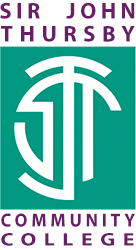Topic 3 Year 8 Art & Design
| Art & Design | |||
| Topic | Fauvist Animals | ||
| No of lessons | 6 | ||
| When is it happening | Term 2 Year 8 | ||
| What will students learn | About the Fauvist art movement and where this is within the historical art movement timeline (with reference to previous Post-Impressionist and Cubist movements studied) Who the main Fauvists artist's were, in particular Franz Marc. How Franz Marc used animals and his own colour theory to evoke certain moods/ emotions which were often responding to historical events. Students will work in the style of Franz Marc considering colour shape and mood. Students will learn to experiment with the properties of the medium of oil pastels through texture (smudging / dragging / layering / scratching / blending / mixing) to mix colour and tone and create texture through mark making. | ||
| Key Knowledge that students should know at the end of 'Topic' | This is the knowledge that students will meet for the first time in this topic | Understanding Fauvism, it's literal translation 'Wild Beast's' the importance of unnatural colour and the use of colour to create emotion. The Fauvist art movement begins towards the end of Post-Impressionism (similarities with expressionism and Van Gogh) and runs at the same historical time as cubism, How animals were used within Franz Marc's images to convey profound messages about humanity, the natural world and the fate of mankind. | |
| This is knowledge that students may have met before but will need to deepen their understanding | Students have knowledge of previous art movements Post-Impressionism and Cubism and will be able to place Fauvism within an art historical timeline. Students will be able to respond to artist's, understanding events in history and how artist's create work responding to their place in time. How artists manipulate formal elements in order to create mood/emotion to evoke a reaction within the viewer. Students have a good knowledge of colour theory which will be extended when discussing Franz Marc's own links to certain colour and mood/meaning. | ||
| Key Skills that students should be able to demonstrate at the end of 'Topic' | This is the skills that students will meet for the first time in this topic | Mixing and blending colour in order to create tone. Retrieval of colour wheel knowledge to blend secondary and tertiary colours, to evoke emotion by blending together harmonious colours as well as contrasting colour groups | |
| This is skills that students may have met before but will need to develop | Manipulating oil pastels in order to blend vivid intense colour and create texture. | ||
| Key vocabulary that students should know and understand |
Expressionism, Fauvism 'Wild Beast's’, Manipulation of Colour, Texture, Impasto, Scumble, Abstract, Colour Scheme, Observation, Emotive, Mood, Emotion. |
||
| The Big Question | What is Fauvism and how do I create art in the style of Franz Marc? | ||
|
Key questions that students should be able to answer at the end of the 'Topic' |
What is Fauvism and who are the main Fauvist artist's? | ||
| How do I create art in the style of Franz Marc, how do I observe animal shape accurately? | |||
| How do I impose my own Fauvist colour scheme on my realistic animal image in order to create an emotive piece considering Franz Marc's colour meaning? | |||
| How do I manipulate oil pastels in order to demonstrate my own colour blending techniques demonstrating a range of tones and understanding of colour theory? | |||
| How do I utilise oil pastel properly in order to demonstrate various texture thus reflecting the intended mood of the piece (smooth blending / dragging / scratching /thick layering)? | |||
